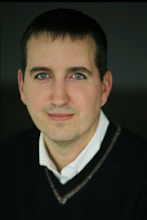Greetings from the rock! No not Newfoundland, the other rock, Vancouver Island. With population exceeding 750,000, Vancouver Island stretches 453 kilometers southeast to northwest along the western coast of British Columbia. The largest city on Vancouver Island and capital of British Columbia is Victoria famous for its mild weather, castles, incredible coastlines and Canada’s oldest golf course, the Victoria golf club.
Who am I and what is my background?
My name is Paul Robertson and I have been a golf course superintendent for twenty years, ten at the Victoria golf club (VGC). I have a two year diploma in Turfgrass Management, a degree in Horticulture and I am currently completing my MBA in Project Management.
How is this blog going to work? I will be writing a weekly blog on the highs and lows of Turfgrass management, or as we like to call it, "Professional Turfhugger". I will post a subject, provide my opinion, then invite you to debate and discuss your ideas. So grab a cup of coffee, your morning muffin and take 5 minutes to increase your web presence while broadening the views of Turfhuggers around the world!
This weeks topic: Perceptions Vs. Reality…
Only a chosen few hear the call to Turfgrass management. This leaves many people looking in on our industry speculating, guessing and often misunderstanding the science and art required to maintain public turf spaces. For this week’s blog I would like to discuss the perceptions versus reality of pesticide use in your area.
Municipalities in greater Victoria are in various stages of pesticide prohibition. VGC is located in the municipality of Oak Bay. I recently met with interests groups and Oak Bay officials to discuss the first draft of a pesticide restriction bylaw. The draft bylaw proposes to ban all non-essential, cosmetic application of pesticides. By the end of the meeting, it was clear that much of the fervor over pesticides is a case of perception versus reality.
Here are a few to discuss:
Perception – Golf courses and agriculture are the biggest user of pesticides in Canada.
Reality - Pesticides applied to homes and home lawns account for as much as 80% of all pesticides sold in Canada…
Perception – If we cannot prove that pesticides are the source of introduced chemicals in our environment, we should apply the “precautionary principal”.
Reality – The precautionary principal blindly protects us from suspected risks. It argues that we should refrain from anything which is not clearly understood, with no definable risks, or a risk so small it may outweigh the potential benefits.
Perception – The number one killer in the world is cancer.
Reality - The biggest killer in the world is only referred to by an innocuous code name “Z59.5” in the International Classification of Disease Handbook and accounts for more deaths world-wide than any other single factor…'Extreme poverty induced lack of food'. Z59.5 kills more people than cancer, heart disease, infection and accidental deaths combined!
Perception – By eliminating all pesticides will eliminate our exposure to harmful chemicals.
Reality – Some of our most harmful and easily absorbed chemical are a result of intentional exposure to active ingredients in our day to day personal hygiene products (athlete’s foot products, deodorant, dandruff shampoo, cosmetics).
Take a moment to consider the dichotomy of pesticides in our environment. Reply with additional perceptions vs. reality or comment on my posting. Let’s see where we can take this subject.
In closing, each week I would like to leave you with an unknown or overlooked benefit of turfgrass in our environment: 2,500 square feet of lawn absorbs enough carbon dioxide from the atmosphere, and releases enough oxygen to support a family of four.
Perception Vs. Reality
Tags
You may also like...
Subscribe to:
Post Comments (Atom)

2 Comments
now that landscapers in ontario cant use pesticides any idea what the stats will be for total use between golf farms and ministry of environment
i like the new site scott and i look forward to reading more from paul
Thank you for the reply Chinch.
Several sources suggest:
- 50% of all home owners have used a landscape pesticide,
- landscape pesticides account for 13-20 percent of pesticide use.
EmoticonEmoticon